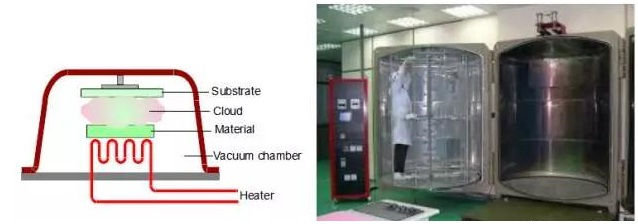Introduction to MgF2, optics and coating
- gwj0606
- Oct 31, 2023
- 2 min read
Introduction:
Fluoride materials play a crucial role in various scientific and technological advancements, especially in the field of optics. Among them, magnesium fluoride (MgF2) stands out as one of the earliest and most widely used fluoride materials with exceptional optical properties. This article aims to provide an in-depth understanding of MgF2, including its basic properties, applications, and particularly its significance in optical applications.

Basic Properties:
MgF2 exhibits a simple and unchanging tetragonal crystal structure with a space group of P42/mnm. This well-defined structure contributes to its stability and desirable properties. One of the key reasons for the popularity of MgF2 as an optical coating material is its outstanding performance across a broad range of wavelengths. It possesses high transmittance and low optical refractive index in the ultraviolet, visible, and infrared regions, spanning from 120 to 8,000 nm. This wide transmission range allows MgF2 to be utilized in various optical applications across different spectral regions.
Applications:
MgF2 finds widespread application in thin film coating. The predominant technique for MgF2 coating is sputtering. During this process, a solid MgF2 target is placed within a sputter chamber as an electrode. This MgF2 solid, or so called sputtering target, undergoes bombardment by heavy ions, resulting in the generation of fragments. These fragments are subsequently deposited onto the substrate's surface through the influence of an electromagnetic field, leading to the formation of the desired coating. Below is a photo of MgF2 target, made by QSAM.

1. Anti-Reflective and Anti-Reflective Coatings: MgF2 has gained significant recognition as an excellent optical coating material. Its exceptional properties, including high transmittance, low refractive index, ease of deposition, high mechanical strength of the film layer, and environmental stability, make it ideal for anti-reflective (AR) and anti-reflective coatings. By applying MgF2 coatings on optical instruments, such as lenses, mirrors, and filters, the unwanted reflection and glare can be minimized, resulting in improved optical performance and enhanced image clarity.
2. Composite Functional Thin Films: The versatility of MgF2 extends beyond traditional coatings. By combining MgF2 with different noble metal nanoparticles, researchers have developed composite functional thin films with unique properties. For example, the combination of MgF2 with silver nanoparticles (Ag-MgF2), copper nanoparticles (Cu-MgF2), or aluminum nanoparticles (Al-MgF2) creates optoelectronic thin films that exhibit enhanced functionalities. These composite films find applications in areas such as plasmonics, sensors, photovoltaics, and optical devices, offering tailored optical and electronic properties.

Design and Analysis:
Designing and analyzing MgF2 thin films and MgF2 composite films require a comprehensive understanding of the optical constants of the MgF2 component material. Optical constants, including refractive index and extinction coefficient, are fundamental parameters that determine the behavior of light interaction with the film. Accurate knowledge of these properties enables precise design, optimization, and performance evaluation of MgF2-based optical coatings and composite films.
Conclusion:
MgF2, with its simple crystal structure, wide transmission range, and exceptional optical properties, has become a key material in the field of optics. Its widespread use in anti-reflective and anti-reflective coatings for various optical instruments underscores its performance and reliability. Additionally, the combination of MgF2 with different noble metal nanoparticles opens avenues for developing novel composite functional thin films with tailored properties. As research and technological advancements continue, the understanding and utilization of MgF2 in optical applications will undoubtedly contribute to further breakthroughs in the field of optics and photonics.







Comments